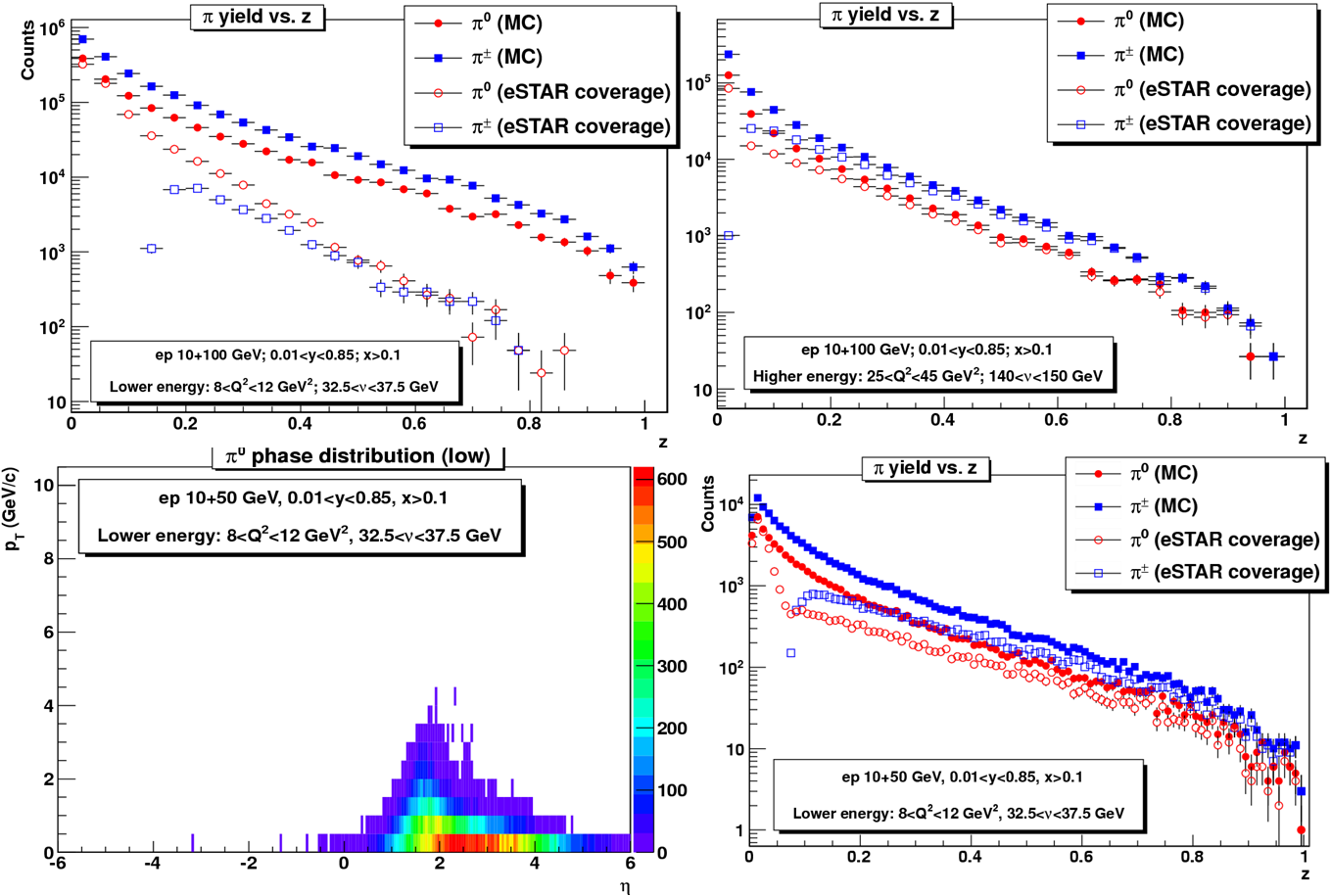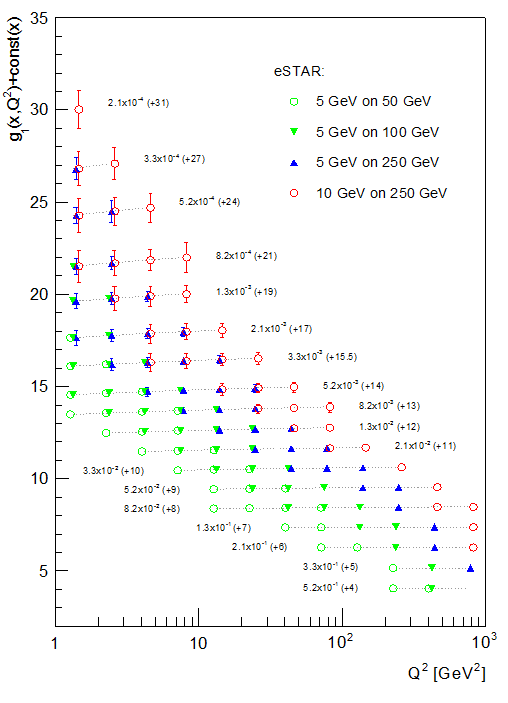Section II: Physics Highlights from EIC whitepaper and eSTAR Performance
DVCS figures
Latest versioin from Zhenyu
https://drupal.star.bnl.gov/STAR/system/files/yezhenyu_20130908_DVCS_eSTARLoI_v2.docx
https://drupal.star.bnl.gov/STAR/system/files/yezhenyu_20130908_DVCS_eSTARLoI_v2.docx
Generalized Parton Distributions (GPDs) provide invaluable information on how quarks and gluons are distributed inside the nucleon in the three-dimensional longitudinal momentum and transverse impact parameter space. GPDs may also provide the unique access to the total angular momenta of quarks and gluons in the nucleon and solve the nucleon spin puzzle. The deeply virtual Compton scattering (DVCS) process is the theoretically cleanest channel to access the GPDs. As shown in [reference to the EIC white paper], the EIC machine is an ideal place to perform DVCS measurements accessing gluon and sea quark GPDs.
MC studies have been performed to examine the performance of the anticipated eSTAR detector for DVCS measurements using the MILOU generator [reference to MILOU]. While electrons and photons can be detected by the calorimeters and/or tracking detectors, protons by Roman Pot stations (RPs) covering 0.03<-t<2 GeV2, the exclusivity of the measurement will be assured by the full azimuthal coverage in -4<η<5.2 of the eSTAR detector. It has been found that a good acceptance in the x-Q2 plane can be achieved with the eSTAR detector setup, which is essential in examining scaling evolution effects predicted by the perturbative QCD theory and to extract gluon GPDs from such effects. Shown in Figure 1 are measurements of differential DVCS cross-sections and transverse target spin asymmetry projected on 1 fb-1 of data collected by the eSTAR detector in certain kinematic phase spaces. The main background contribution to DVCS cross-section measurements is from the well-known Bethe-Heitler (BH) process. The latter is subtracted and a 3% uncertainty on its contribution is propagated into DVCS cross-section measurements. Other background contributions include low multiplicity diffractive meson production and π0/η semi-inclusive DIS production. Such background contributions to the DVCS measurements were found to be negligible by the HERA experiments. They are not considered here as the eSTAR calorimeter in general has better spatial resolutions than the ones in the HERA experiments. As can be seen in Figure 1, some decent DVCS measurements can be performed by the eSTAR experiment at the Phase-I eRHIC machine.
Diffractive Vector Meson figures
Diffractive vector meson production, e+A→e’+A’+V where V=J/ψ, φ, ρ, or γ, is a unique process, because it allows the measurement of the momentum transfer, t, at the hadronic vertex even in e+A collisions where the 4-momentum of the outgoing nuclei cannot be measured. Since only one new final state particle is created,the process is experimentally clean and can be unambiguously identified by the presence of a rapidity gap. J/ψ with its compact dipole size is not particularly sensitive to the gluon saturation. Larger mesons such as φ or ρ are considerably more sensitive to saturation effects. We have carried out the simulation of these vector meson productions in the diffractive processes. Instead of deriving |t| from the 4-momentum of the scattered electron and the created vector mesons, an approximation using the transverse momenta of these two particles |t|=(pxe’+pxV)2+(pye’+pyV)2 is found to achieve good absolute value and resolution. The achieved resolution of st/t~=2.5% is shown to be able to allow eSTAR measurement to clearly follow the input diffractive pattern required in EIC whitepaper.
Dihadron correlation figures
Latest version from J.H. Lee
https://drupal.star.bnl.gov/STAR/system/files/dihadron_loi.docx
Dihadron Correlation at 10X100 Q2=1 y=0.7 with STAR tracking smearing
Energy Loss figures

F2 g1 figures
